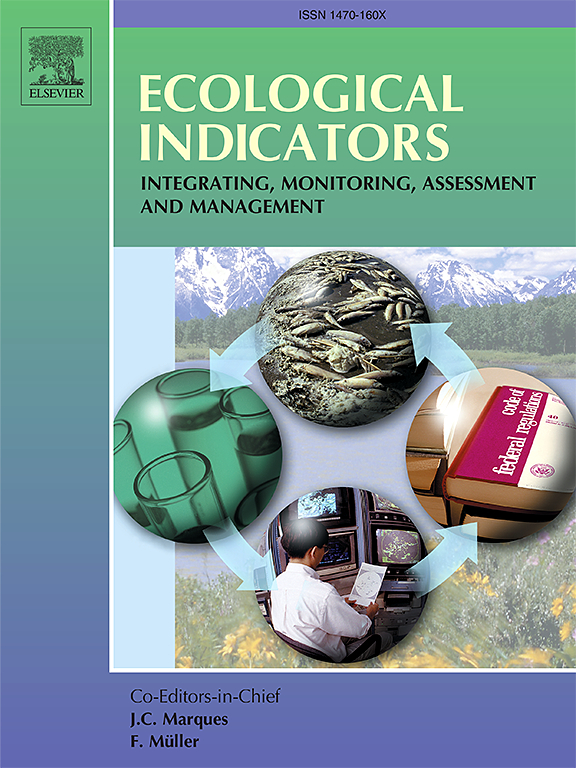Quantitative contribution of climate change and vegetation restoration to ecosystem services in the Inner Mongolia under ecological restoration projects
IF 7
2区 环境科学与生态学
Q1 ENVIRONMENTAL SCIENCES
引用次数: 0
Abstract
In the context of ongoing ecological restoration efforts, understanding the impacts of vegetation restoration on ecosystem services (ESs) is critical for sustainable ecosystem management. However, the quantitative contributions of vegetation restoration and climate change to ESs, as well as the relationship between vegetation restoration and ESs, remain insufficiently explored. This study focuses on the Inner Mongolia Section of the Beijing-Tianjin Sandstorm Source Control Project Area (IM-BTSSCPA) to address these gaps. The temporal and spatial dynamics of total ecosystem services (TES) in the IM-BTSSCPA from 2001 to 2020 were evaluated. The contributions of climate and Human Appropriation of NDVI (HANDVI) to TES were quantified, and the nonlinear constraint thresholds of NDVI on TES were identified. Key findings include: (1) TES improved significantly from 2001 to 2020, with a spatial trend of increasing from the northwest to the southeast; (2) HANDVI was identified as the primary driver of TES improvement, contributing 63.23%; and (3) NDVI exhibited nonlinear constraint effects on sand fixation, water yield, and TES, with respective thresholds of 0.32, 0.49, and 0.79. These findings suggest the need for multi-scale eco-spatial management and planning strategies, and offering valuable guidance for the implementation of sustainable ecological restoration projects.
求助全文
约1分钟内获得全文
求助全文
来源期刊

Ecological Indicators
环境科学-环境科学
CiteScore
11.80
自引率
8.70%
发文量
1163
审稿时长
78 days
期刊介绍:
The ultimate aim of Ecological Indicators is to integrate the monitoring and assessment of ecological and environmental indicators with management practices. The journal provides a forum for the discussion of the applied scientific development and review of traditional indicator approaches as well as for theoretical, modelling and quantitative applications such as index development. Research into the following areas will be published.
• All aspects of ecological and environmental indicators and indices.
• New indicators, and new approaches and methods for indicator development, testing and use.
• Development and modelling of indices, e.g. application of indicator suites across multiple scales and resources.
• Analysis and research of resource, system- and scale-specific indicators.
• Methods for integration of social and other valuation metrics for the production of scientifically rigorous and politically-relevant assessments using indicator-based monitoring and assessment programs.
• How research indicators can be transformed into direct application for management purposes.
• Broader assessment objectives and methods, e.g. biodiversity, biological integrity, and sustainability, through the use of indicators.
• Resource-specific indicators such as landscape, agroecosystems, forests, wetlands, etc.
 求助内容:
求助内容: 应助结果提醒方式:
应助结果提醒方式:


